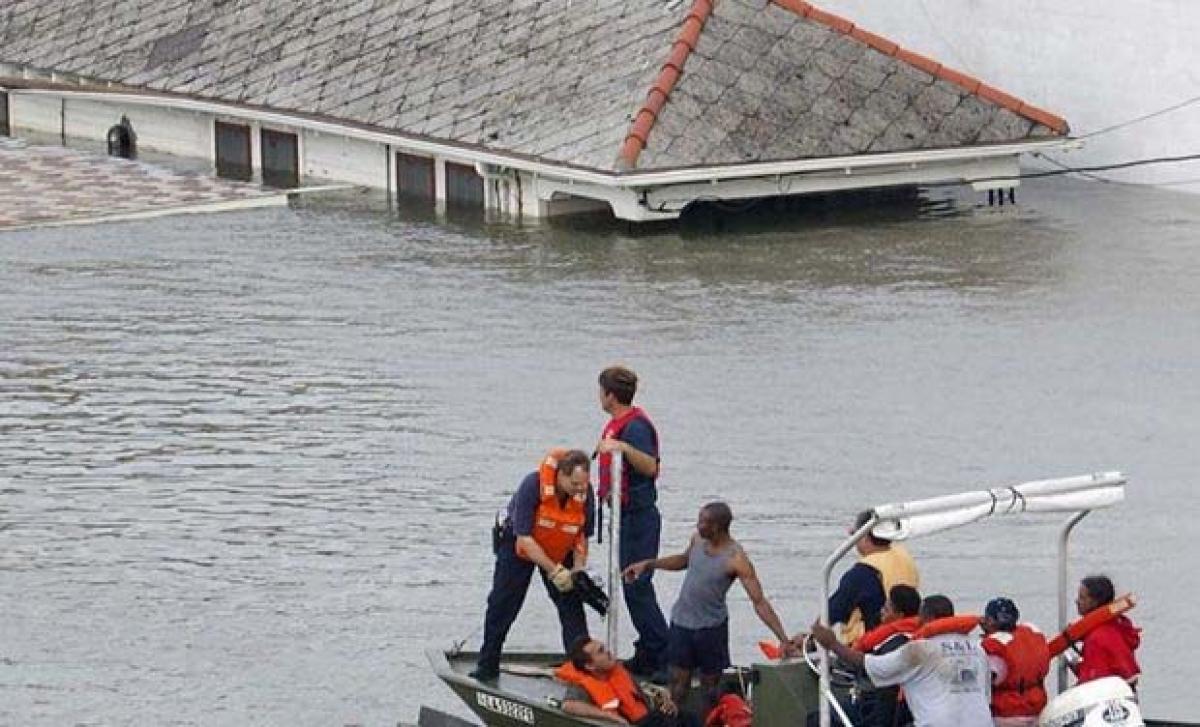Live
- AIADMK's big meet discusses 2026 polls, prospective alliances
- BJP questions Congress-Shiv Sena (UBT) alliance over Aaditya Thackeray's Savarkar-Nehru remark
- Maha Oppn to boycott customary CM tea meet, cites rising farmers' distress, atrocities against Dalits
- Mikheil Kavelashvili is new Georgian President
- He makes things look easy: Smith on 241-run partnership with Head
- Decline in TB cases & deaths in India ‘remarkable’, shows ‘political commitment’, says former WHO Director
- PKL 11: Delhi dedicates win over Haryana to ‘junior express’
- Cyclone kills 14 in French territory Mayotte
- 3rd Test: Head, Smith centuries flatten India on Day 2
- AAP Announces Final Candidate List For 2025 Delhi Assembly Elections, Kejriwal To Contest From New Delhi
Just In

x
Highlights
Ten years ago, Hurricane Katrina swept buildings off their foundations and deluged nearly all of New Orleans with floodwaters that rose so fast some people drowned in their homes.
Ten years ago, Hurricane Katrina swept buildings off their foundations and deluged nearly all of New Orleans with floodwaters that rose so fast some people drowned in their homes.
Those who made it to their rooftops or the relative safety of dry land waited days to be rescued as the Big Easy descended into chaos. Today, colourful homes on stilts have replaced many of the rotting hulks left behind after the low-lying coastal city in the southern United States was finally drained.
.jpg)
Brass bands are once again marching through the bustling French Quarter, pulling dancing locals and tourists in their wake. And the gastronomical paradise boasts 600 more restaurants than it had before the storm.
"Our city has stood back up and this comeback is one of the world's most remarkable stories of tragedy and triumph, resurrection and redemption," Mayor Mitch Landrieu said Tuesday. "In one word: resilience," he said. More than 1,800 people were killed across the US Gulf Coast, the vast majority in New Orleans, and more than a million people were displaced when the Category 5 hurricane struck on August 29, 2005. The financial toll topped $150 billion.
Some of the deadliest damage was caused by the failure of poorly-built and badly maintained levees, which burst under the pressure of a massive storm surge. Around 80 percent of New Orleans was flooded with water that rose as high as 20 feet (six meters).
The botched government response exposed the nation's failure to improve emergency preparedness despite billions spent on homeland security after the terrorist attacks of September 11, 2001. It took four days for supply trucks to arrive with food and water for tens of thousands of stranded people.
Eventually, the entire city was evacuated. It took weeks to drain the floodwaters and conduct a house-by-house search for bodies. It was months before most people could return to their homes.
Booming economy
Once the largest slave market in the United States, New Orleans before the storm was a racially stratified city struggling with high crime rates, under-funded schools, crumbling infrastructure and a lack of economic opportunity.
It faced a fundamental question as it rebuilt after Katrina: would it go back to the way it was, or was this an opportunity to transform for the better? Sean Cummings, a high-end developer who has reshaped much of downtown, said the city needed to change.
"In the aftermath of the Katrina catastrophe, I think that a city looks at itself almost like an individual in a time of trauma," he said. "Am I leading the life I'm supposed to lead?" Hotel occupancy rates are higher than pre-storm, 14,000 jobs have been added since 2010, and business start-up rates are 64 percent higher than the national rate.
Crime is down, with the murder rate hitting a 43-year low in 2014 and the population in city jails down by two-thirds. Schools have also improved, with graduation rates and test scores up sharply. City council president Jason Williams said that while the city has bounced back in many ways, it still has a long way to go.
"New Orleans is a particularly poor town, and we suffer from generational poverty," he said. Plus, the work of repairing Katrina's damage to the city's basic infrastructure, power lines, grocery stores, hospitals, homes and levees, continues even to this day.
New Orleans has the second highest rate of income inequality in the US, and in poorer neighbourhoods, the life expectancy is just 54 years, 25 less than in wealthier zip codes just a couple miles away. Rosana Cruz, of the racial justice organization Race Forward, accuses the mayor of prioritising spending for tourists and new arrivals, rather than long-term residents.
"It really is a historic, for lack of a better term, banana republic approach," she said. "We are giving it away for the benefit of those who will come here."
Mourning lost friends, community
Some residents say the flavour of a city that was once more Afro-Caribbean and Creole than American has been altered. A huge swath of the population never came back. New Orleans now has 100,000 fewer residents than it did before Katrina and many are newcomers.
The black population has fallen by about 115,000 people, dropping from 68 percent of residents in 2000 to 60 percent in 2013, the latest census figures show. Asia Rainey, a poet and small business owner, grew up in the hard-hit Lower Ninth Ward neighbourhood. She still mourns for her friends, family and a community that has not returned.
"We're struggling to hang on," she said. "It can't be New Orleans without the people that built it."
More On

Next Story
More Stories
ADVERTISEMENT
© 2024 Hyderabad Media House Limited/The Hans India. All rights reserved. Powered by hocalwire.com







